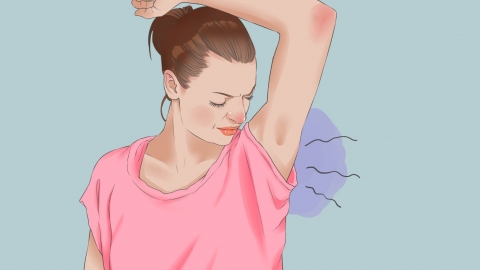How to treat body odor (bromhidrosis)
Bromhidrosis usually refers to axillary osmidrosis. Generally, axillary osmidrosis may be caused by genetic factors, hormonal changes during puberty, axillary hyperhidrosis, bacterial dermatitis of the axilla, or sebaceous gland inflammation of the axilla. It is recommended to seek timely medical consultation, identify the cause, and improve the condition through general treatments and medication under a doctor's guidance. A detailed explanation is as follows:

1. Genetic factors: A family history of axillary osmidrosis may lead to excessive secretion from underarm apocrine glands due to genetic factors. Bacterial breakdown of sweat causes odor, typically becoming noticeable after puberty. In daily life, wash the armpits daily with warm water, apply antiperspirant after drying, and choose loose, breathable cotton clothing.
2. Hormonal changes during puberty: Increased androgen levels in puberty stimulate the development and maturation of underarm apocrine glands, increasing sweat secretion. Odor results from sweat decomposition and is commonly seen in adolescents. Avoid strenuous exercise to reduce sweating, and shower and change clothes promptly after physical activity.
3. Axillary hyperhidrosis: Abnormally overactive sympathetic nerves cause excessive sweat production from the axillary sweat glands. Long-term moisture promotes bacterial proliferation, intensifying odor and causing persistent underarm dampness. Patients should apply medications such as aluminum chloride solution, urotropine solution, or formaldehyde solution to the underarms as directed by a physician to inhibit sweat gland secretion.
4. Bacterial dermatitis of the axilla: Infection of the axillary skin by bacteria such as Staphylococcus aureus or Staphylococcus epidermidis leads to bacterial dermatitis. Rapid bacterial proliferation accelerates sweat breakdown, worsening odor, with symptoms including redness and itching of the underarm skin. Patients should use medications such as mupirocin ointment, fusidic acid cream, or combination polymyxin B cream as directed by a physician for treatment.
5. Sebaceous gland inflammation of the axilla: Blockage of axillary sebaceous gland ducts hinders sebum discharge and leads to secondary infection, causing sebaceous gland inflammation. Inflammatory stimulation results in increased secretions accompanied by odor, with severe cases developing pustules. Patients should use medications such as cefuroxime axetil tablets, azithromycin dispersible tablets, or minocycline hydrochloride capsules as directed by a physician to control inflammation.
In daily life, maintain clean and dry underarm skin, avoid frequent shaving of underarm hair to prevent skin damage and subsequent infection. Choose mild cleansing products and avoid using irritating body washes.








